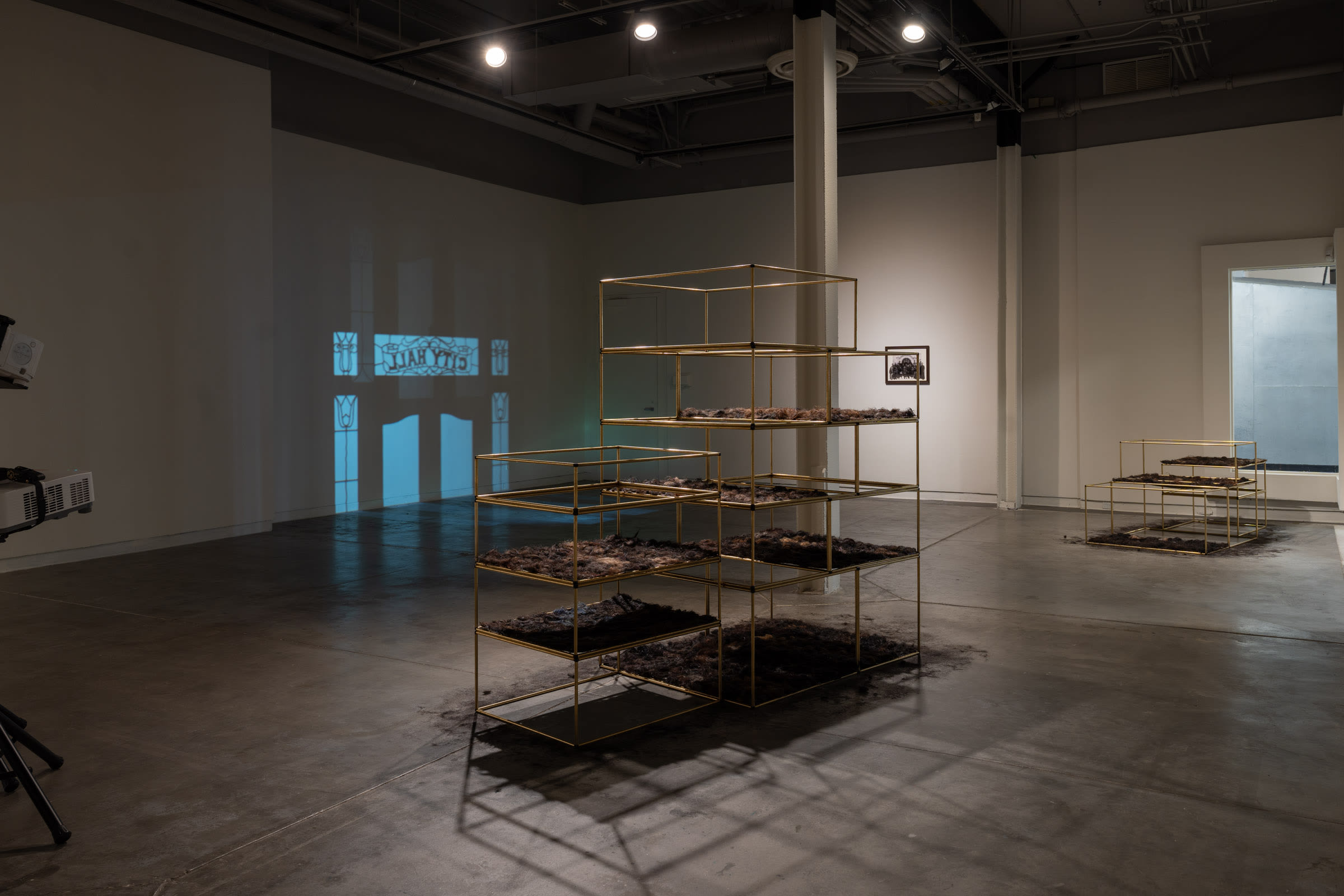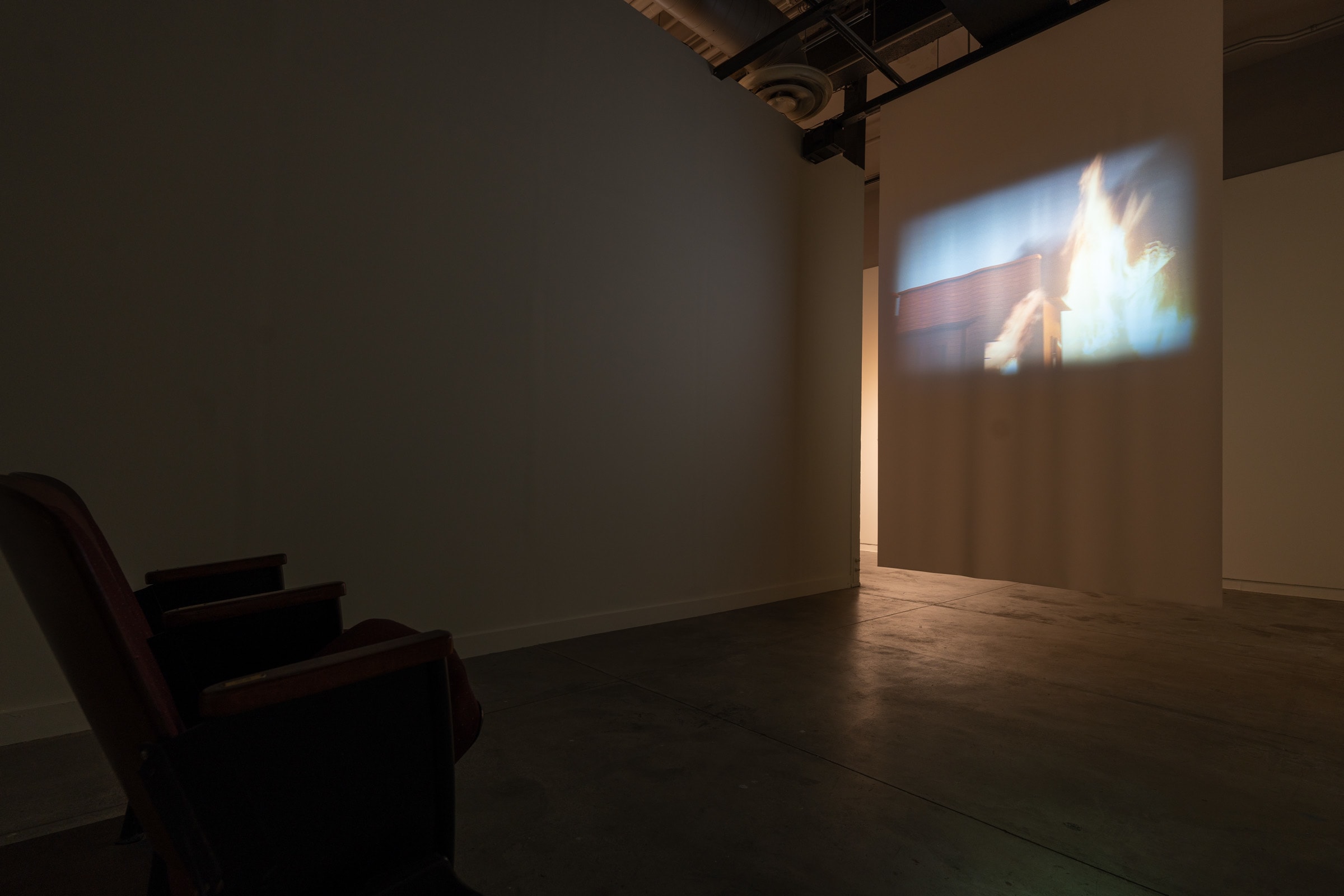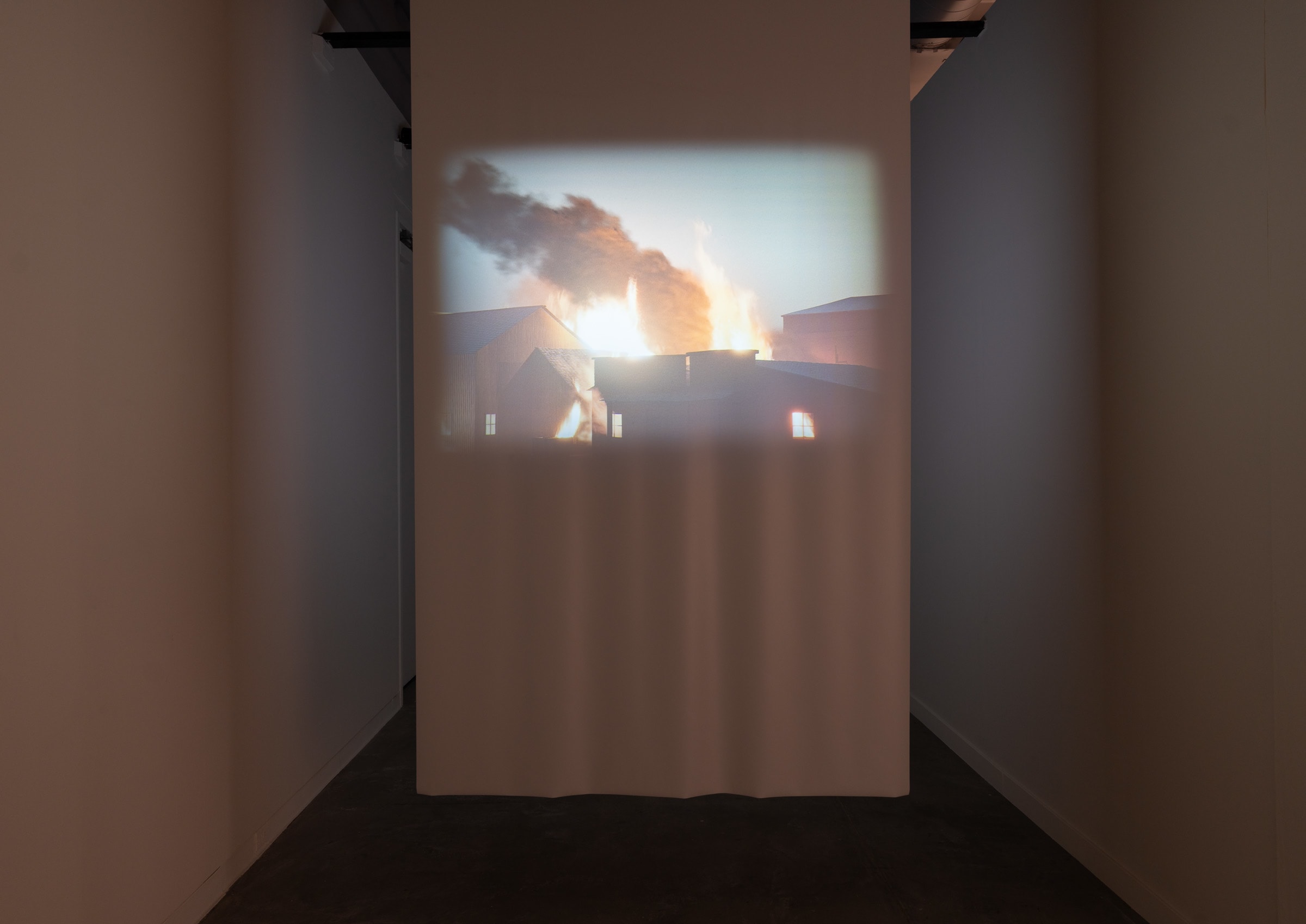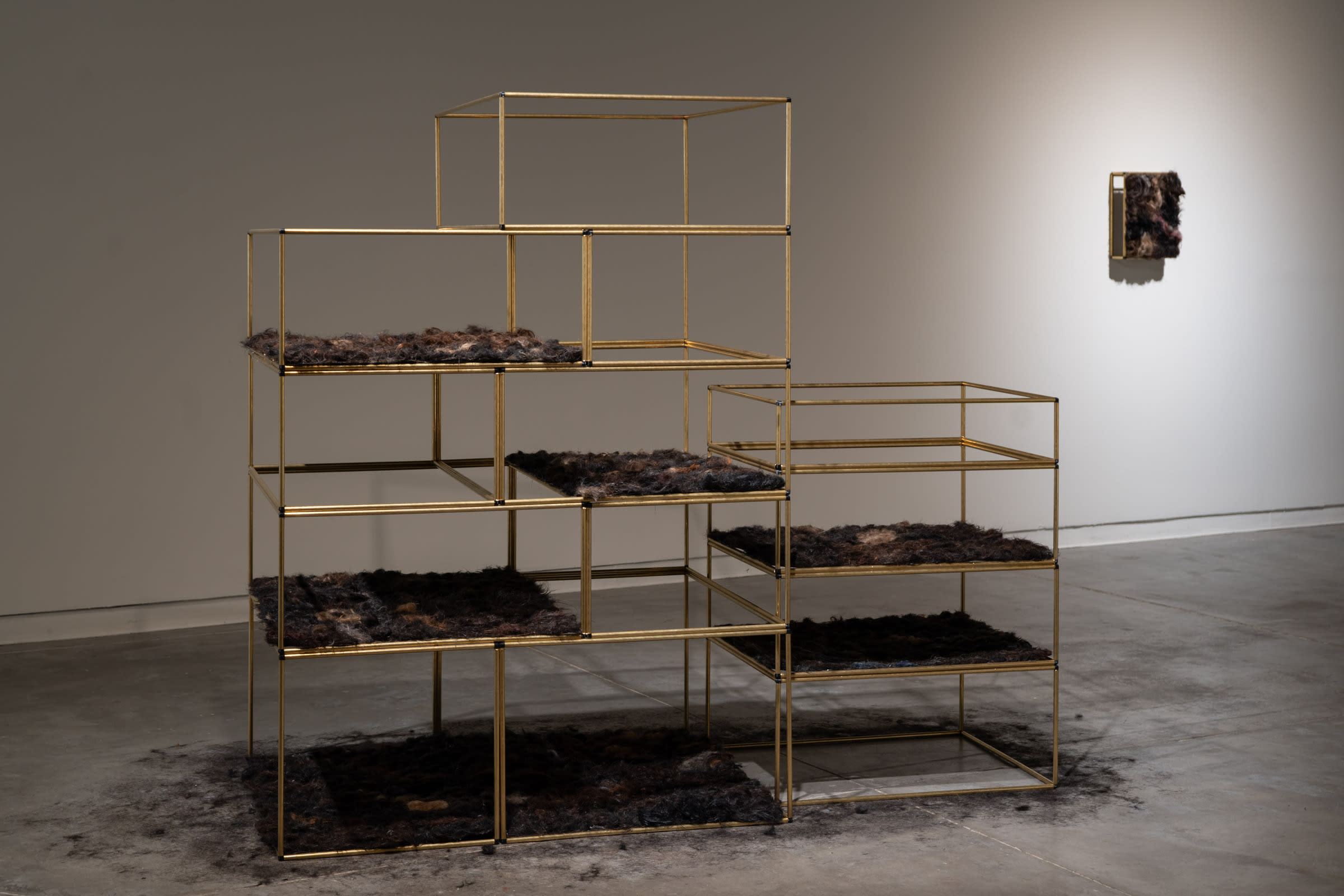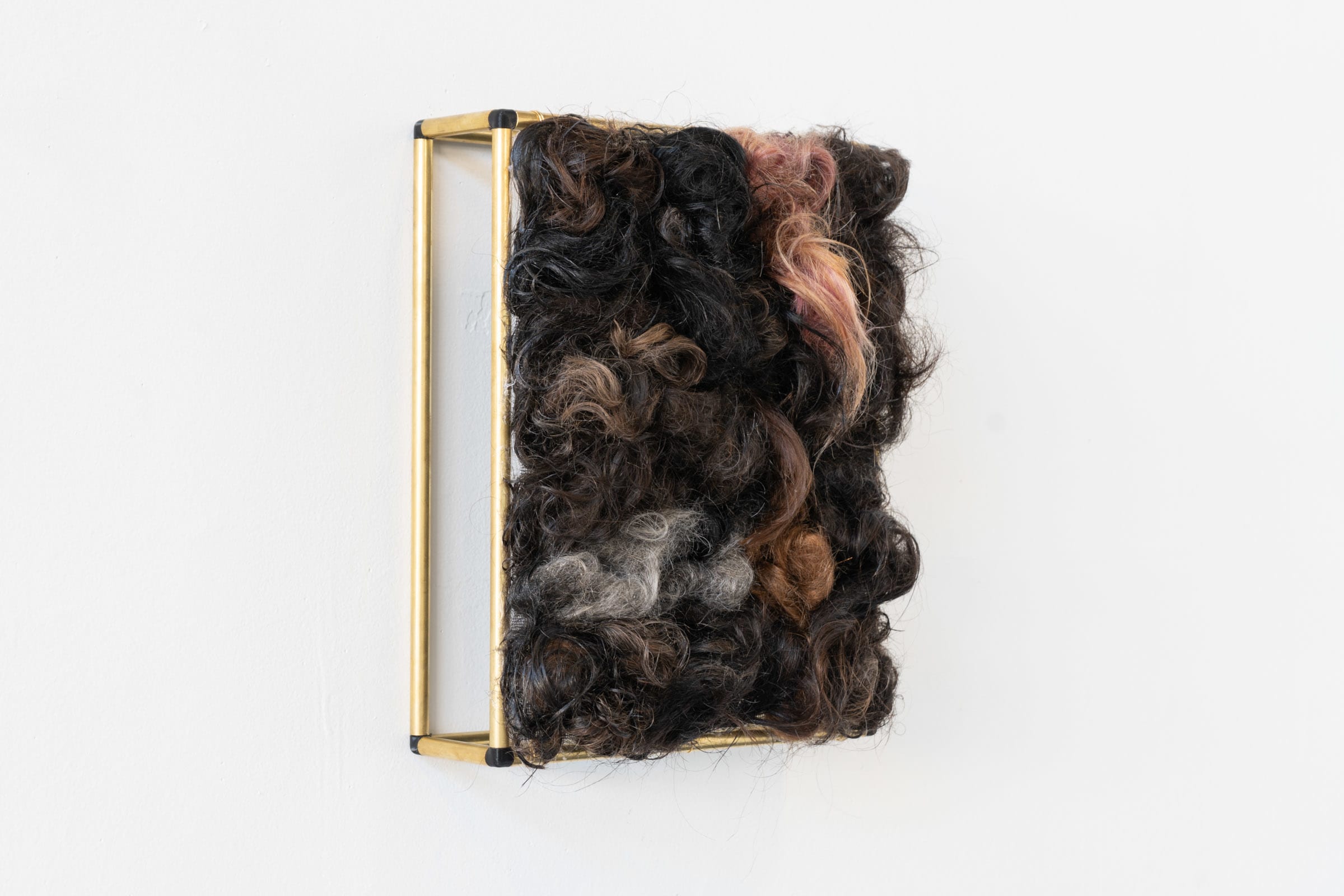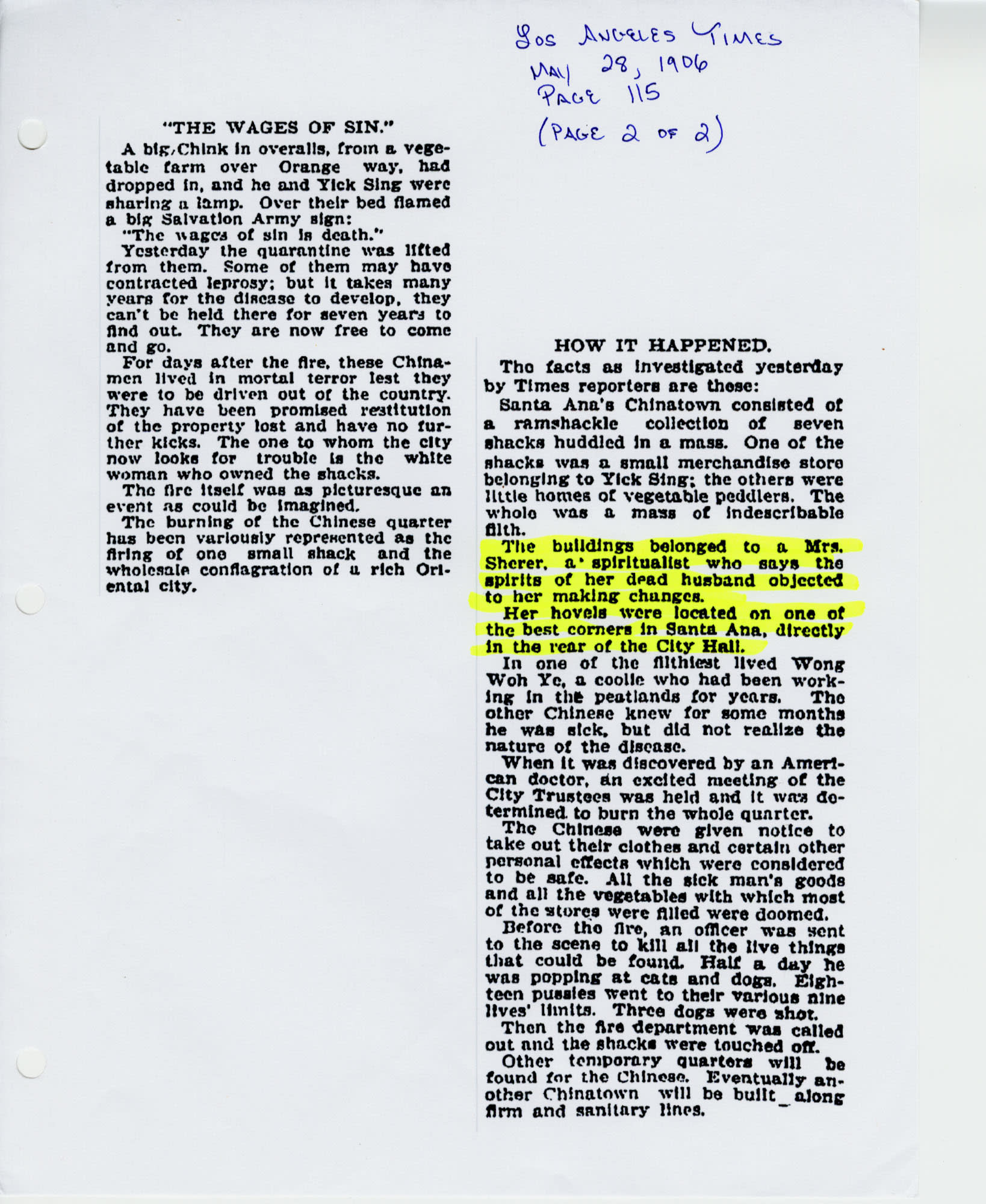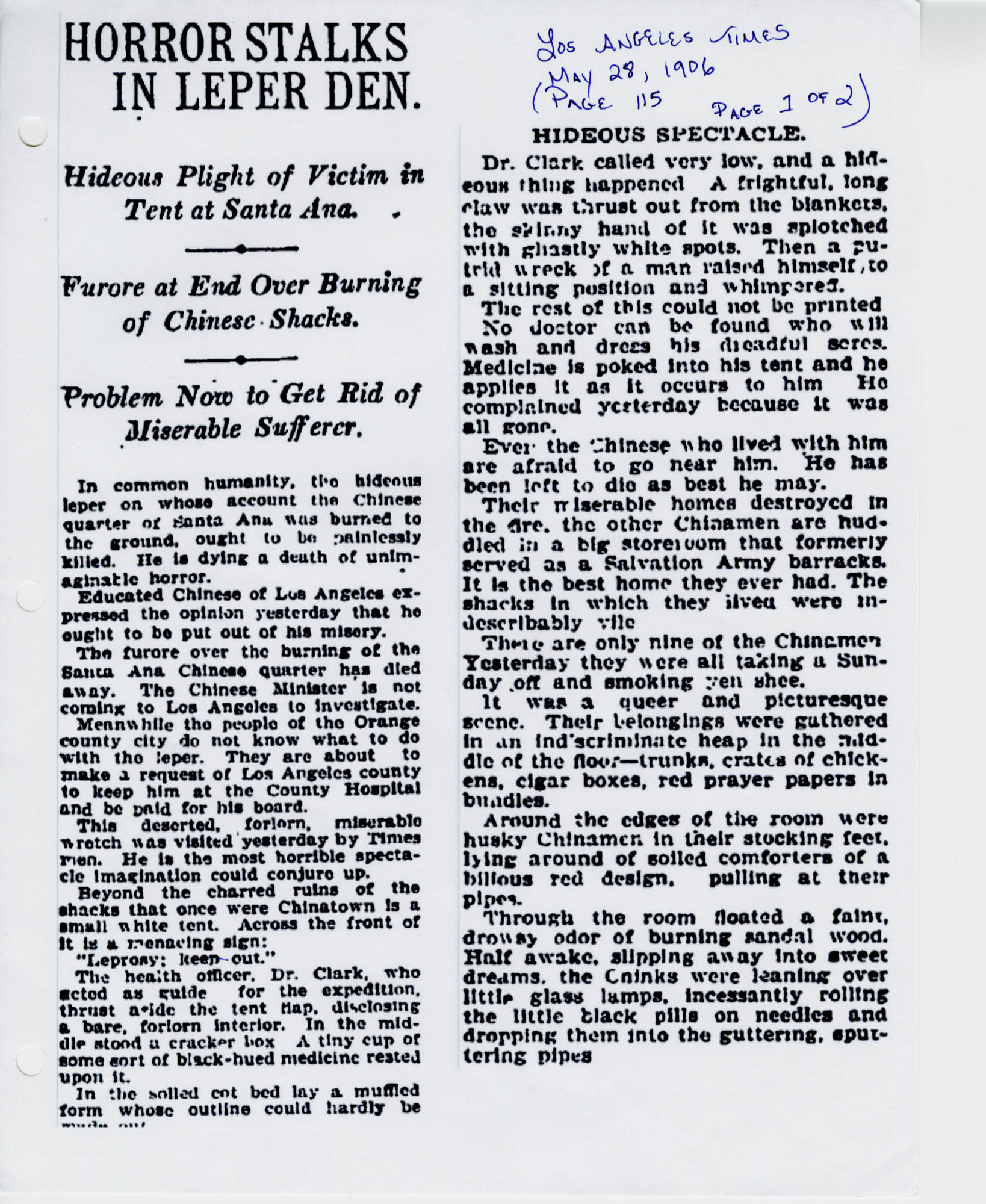Solo Exhibition
Specter in the Gate
Grand Central Art Center
125 N. Broadway, Santa Ana, CA 92701
February 3 – May 12, 2024
http://www.grandcentralartcenter.com/hings-lim-specter-in-the-gate/
Specter in the Gate presents an opportunity to delve into the historical progression of political, economic, and cultural machines, anchoring its narrative in a pivotal yet often forgotten event: the 1906 burning of Chinatown, located adjacent to the former Santa Ana City Hall. This critical incident not only exemplifies the extensive history of biased urban planning and development practices in California but also serves as a poignant reminder of how collective memory and historical narratives are shaped and reshaped over time. The work of Hings Lim is driven by the utilization and notion of perspective machines – technology such as cameras, projectors, and mappings. These mediums extend beyond mere technological use; they act as conduits through which the multifaceted layers of history and memory are examined and presented. By intertwining technological innovation with societal structures, this interplay between technology, history, and memory conjures the tangible and intangible legacies that span time, linking past, present, and future, with a body of works consisting of objects, photographs, moving images, and real-time projection mapping installation.
Featured in the exhibition is an installation comprising two towering structures, built from brass tubes, and layered with human hair that were meticulously collected by the artist from several local salons. During his year-long artist-in-residence at GCAC, Lim reached out to more than half of the over 25 salons run by members of the Latino community, all located within a few blocks of the site where Santa Ana’s Chinatown once stood. The hair, a remnant from the community, materializes a cross-temporal and spatial collective memory, weaving together the history ingrained within the people on this land. These unfinished towers reference ceremonial gateways found in traditional Chinese architecture and echo the arches that are often emblematic of Chinatown. Simultaneously, it creates a parallel narrative, juxtaposing the historical migration of the Chinese with the contemporary migration experiences of the Latino communities.
Upon stepping into the exhibition space, one is drawn to a subtle shadow on the floor seemingly cast by an invisible, shape-shifting object suspended in mid-air. Featuring movement of lights, projectors on tripods, and a computer simulating in real time, this installation utilizes projection mapping as a technique as well as a conceptual framework. At certain moments, shadows cast through an unseen doorway recall the original Santa Ana City Hall built in 1904. This installation, propelled by the notion of the perspective machine, delves into the institutionalization of political, economic, and cultural mechanisms. It suggests how these apparatuses may represent a unitary, imperialistic, or colonial worldview, shaping notions of inclusion and exclusion. Considered as performing beings by the artist, this installation invites a critical interrogation into the technical and conceptual aspects of these interrelated apparatuses, haunted by the unseen, suggesting a rethinking of how the past can be perceived and the future can be envisioned.
In the back room, the narrative deepens through a video installation. A white screen, suspended from above, cascades like a curtain for the backlit projection of a CGI-rendered fire engulfing Santa Ana’s Chinatown. This digital reconstruction entitled At Night (Santa Ana’s Chinatown) is based on historical maps from the era, as Lim’s extensive research led to a single photograph purported to be of the Chinatown ablaze. Using this as these references, along with other historical data, Lim reenacted the tragic night of the fire. The flames burn in an endless loop, symbolizing a perpetual narrative. Resembling the cinematic style prevalent during the early film industry’s boom, the video includes intertitles derived from archived news articles reporting on the Chinatown. These texts starkly expose the era’s profound biases and racial prejudices, further intensifying the installation’s exploration of memory, history, and the continuous impact of past narratives on the present.
Development of the Project
Artist Hings Lim was originally invited to develop an exhibition at the Santa Ana Artist Collective space by that spaces Curator and Director Maurizzio Hector Pineda. At Maurizzio’s untimely passing, and as we considered the curator a dear colleague and friend to our institution, we extended an invitation to Hings to join us as an artist-in-residence to realize their original vision of working together. Hings has been a GCAC artist-in-residence for the past year. We dedicate this exhibition to the spirit and energy of Maurizzio Hector Pineda.
OPENING RECEPTION
Saturday, February 3 from 7-10pm
ARTIST WALKTHROUGH and DISCUSSION
Tuesday, February 20, 2PM
Location: Grand Central Art Center
In collaboration with CSUF Prof. Julie Orser, Creative Photography and Experimental Media and CSUF Begovich Gallery
ARTIST LECTURE
Wednesday, February 21, 4PM
Location: CSU Fullerton, Visual Arts, Building D – RM#180
In collaboration with CSUF Prof. Linda Kroff, Creative Photography and Experimental Media –and CSUF Begovich Gallery
Acknowledgement
“Throughout my residency at GCAC, I reached out to more than half of the over 25 hair salons run by members of the Latino community, all located within a few blocks of the site where Santa Ana’s Chinatown once stood. Despite facing language barriers as I began learning Spanish, I introduced the project to them, emphasizing our proximity to the Chinatown. Their generous contributions and support have been invaluable, helping me to collect hair, a tangible memory of the community’s presence on this land.”
— Hings Lim, February 2024
- Eva’s Beauty Salon (on 3rd & Bush)
- Aries Beauty Salon (on 4th & Sycamore)
- Elma’s Beauty Salon (on 3rd & Bush)
- Crook + Co Hair Salon (on 3rd & Sycamore)
- LA Casa Blanca Beauty Salon (on 3rd & Bush)
- Unisex Beauty Salon (on 4th & Broadway)
- and among others
| Exhibition details | |
| Title | Specter in the Gate |
| Duration | February 3 – May 12, 2024 |
| Location | Grand Central Art Center, Santa Ana, California, USA |
| Download | Press release and worklist |
| References | |
| Dragoo, Michelle. “Santa Ana’s Chinatown Related Research & News Clippings.” February 2024. Scanned February 3, 2024. https://hingslim.com/wp-content/uploads/2024/02/Dragoo-Michelle-Santa-Anas-Chinatown-Related-Research-and-News-Clippings-2024.pdf | |
| Gould, Stephen. The Burning of Santa Ana’s Chinatown and the Murder of Anaheim’s Mock Law Fat. Hollywood: Sun Dance Press, 1995. https://sapl.tlcdelivers.com/#section=resource&resourceid=1015920 | |
| Sleeper, Jim. “Two Tales of the Dragon: The Night They Burned Chinatown.” Orange County Illustrated, vol VIII, June 1970. | |
| Arellano, Gustavo. “A Racist Mob Burned Santa Ana’s Chinatown to the Ground. It Still Serves as a Lesson.” Los Angeles Times, March 21, 2021. https://www.latimes.com/california/story/2021-03-18/lost-santa-ana-chinatown-shows-la-anti-asian-violence-legacy | |
| Bitetti, Marge, and Guy Ball, Santa Ana Historical Preservation Society. Images of America: Early Santa Ana. San Francisco: Arcadia Publishing, 2006. | |


